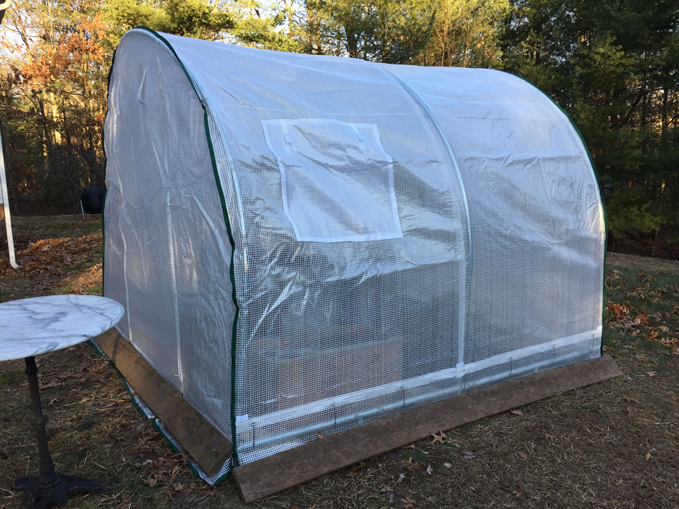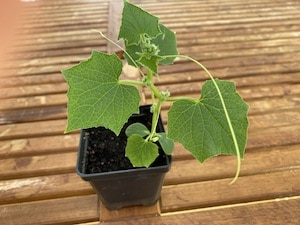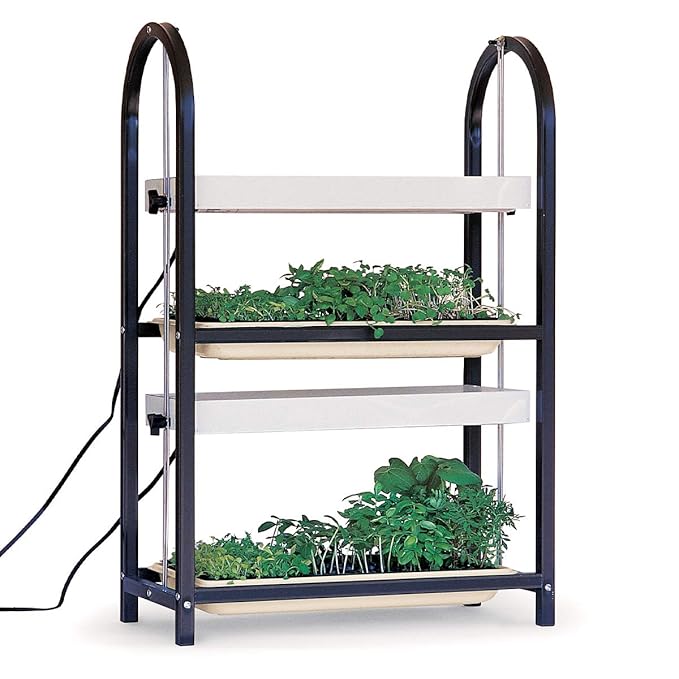Updated: February 4, 2020
Starting seedlings can save you a bundle over expensive garden center plants … if you do it right. You can easily spend a ton if you don’t keep an eye on expenses.
So if saving money is your goal, this article is for you.
Keep in mind, however, saving money isn’t the only reason to start seeds indoors. Where winters are cold, vegetable gardeners often decide to start their plants indoors to get a jump on the short growing season. Another reason is gardeners can’t find the varieties they want at the garden center. Other gardeners want to grow seedlings organically under the best possible growing conditions.
Whatever your reason for starting seedlings, there’s no good reason to throw money away.
Related: Cold Frame Kits Are Inexpensive. Here’s a Review of the One I Bought
Let’s take a sec to get the legal words out of the way. This article may contain affiliate links. That means if you click and buy from my partners, I will make a tiny amount of money. This in no way affects my recommendations.

Here are five tips for starting seeds indoors more cheaply:
Five tips for saving money when starting seedlings
Other backyard gardeners want to make sure seedlings are grown organically under the best possible growing conditions.
- Get rare heirloom seeds free. Many people grow seedslings to save money, only to spend their savings buying seeds. That’s okay if searching through seed catalogs is your thing, but with a little online work, you can get rare varieties for free. I didn’t even pay postage. See how I got three unusual heirloom tomatoes from the USDA Agricultural Research Service at Rare Vegetable Seeds from U.S. Government. The USDA would have sent me more if I had asked.
- Build your own seedling starting unit. Store bought units with grow lights are expensive. A quality unit with enough space for a reasonable-sized garden will cost you a bundle. As a result, it could take forever to make your money back by starting your own plants. But even a “handyman challenged” person such as myself can make a quality unit for half or even one-third the price. See this article Build an Indoor Seedling Starting Unit for a plan for an inexpensive, easy-to-build unit.
Store bought seed starting units can be expensive. - Save on electricity by growing your seedlings in a hoop house. Growing your own seedlings is cheaper than buying them at the garden center. Still, you can save even more by growing them in a hoop house. This way, you replace LED electric light with sun light and save on your electric bill. There never seems to be enough room under the grow lights anyway. A hoop house gives you the advantage of a lot more room. Natural light also is the best way to ensure your seedlings don’t turn out leggy with weak stems because they are reaching for the sun. See my article on hoop house kits for more on taking advantage of natural light.
- Make seedling pots from newspaper. Paying for peat pots or peat trays adds to the cost of your garden. Plus, some of us question if peat is environmentally sustainable. I also wonder if peat contributes to dampening off of seedlings, the most common seedling starting problem. Instead of peat, some like cow manure pots. But they cost a fortune. A cheaper alternative is a soil block maker. But, of course, you have to buy the soil block maker first. Once you buy the soil block maker, there’s only the cost of the seed starting mix. With paper pots, your only cost is the mix. See this video from Dave’s Garden on making paper pots.
- Mix your own organic seed starting mix. If you start a lot of seedlings, you may want to mix your own seed starting mix. But in many cases, it’s cheaper to buy it off the shelf. See my article comparing organic Seed Starting Mix products. I don’t advise sterilizing your own mix in your kitchen oven. I’ve never tried it, but too many people tell me it really smells up the house. Instead, use My Plan for Seed Starting Mix to save by mixing your own.
With these ideas, you can see that starting your own seedlings can a bundle. In fact, you can grow vegetables for next to nothing year after year after.

Everything I Know About Starting Seeds
All my seed starting and seedling growing articles in one place.
Related articles that might interest you:
- Transplant Seedlings at Proper Soil Temps
- Neptune’s Harvest Fertilizer, a Product Review
- Comparing Soil Block Makers & Paper Pots for Starting Seeds Indoors
Suburban Hobby Farmer is a participant in the Amazon Services LLC Associates Program, an affiliate advertising program designed to provide a means for sites to earn advertising fees by advertising and linking to amazon.com.
